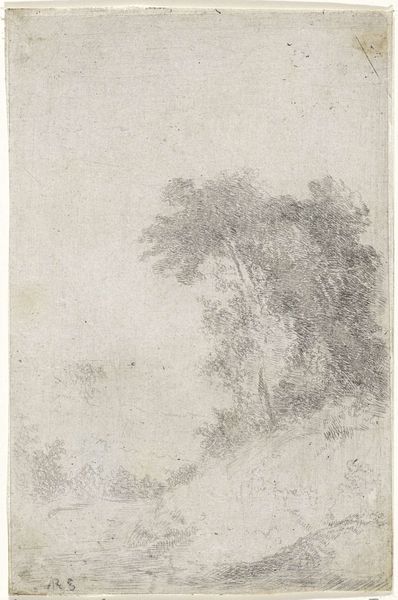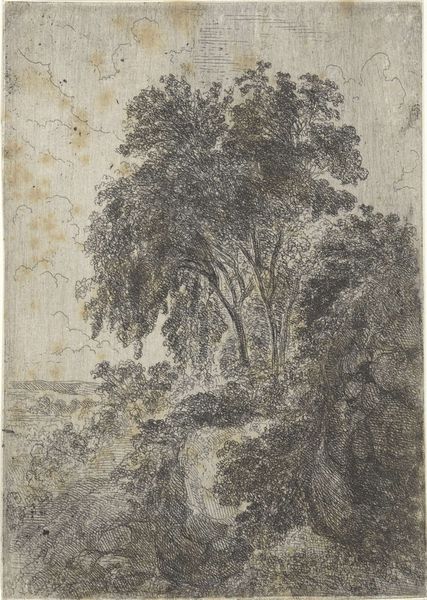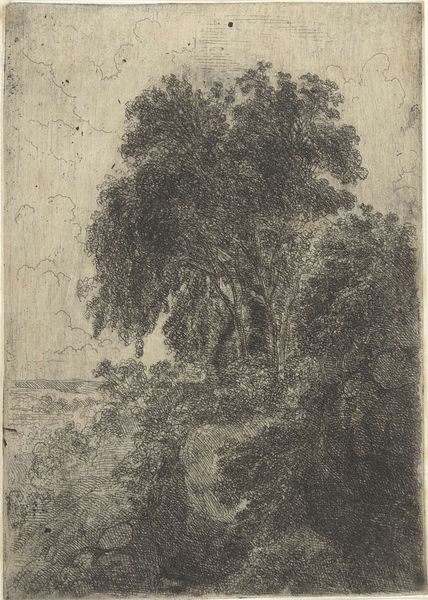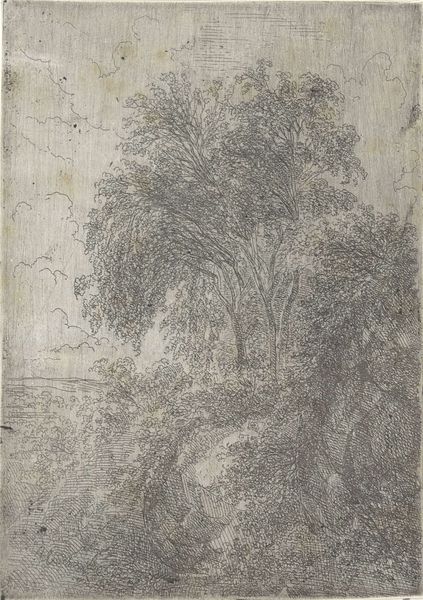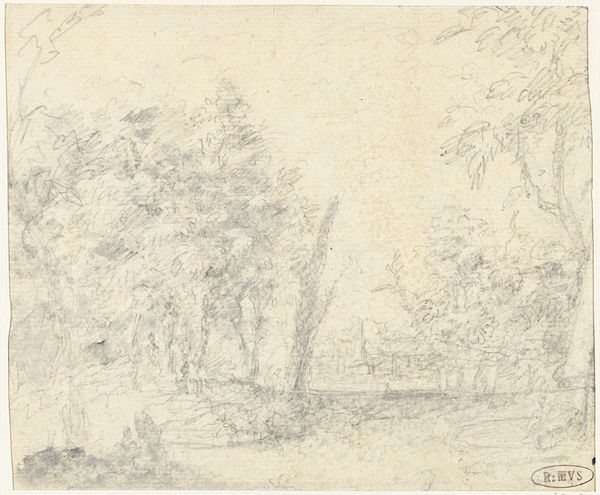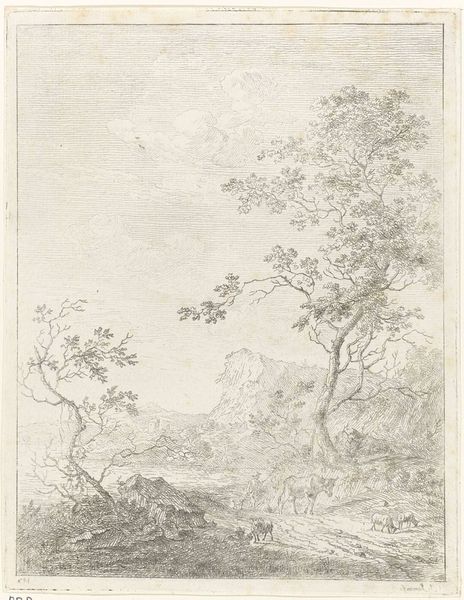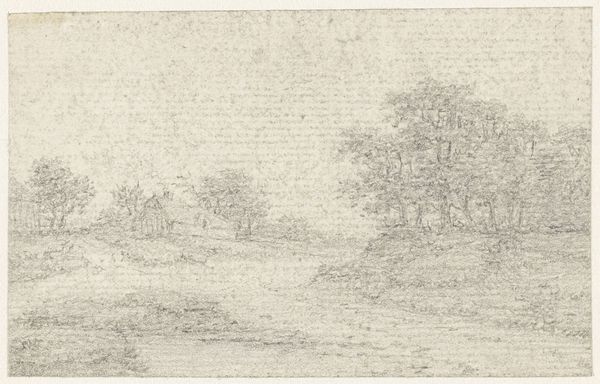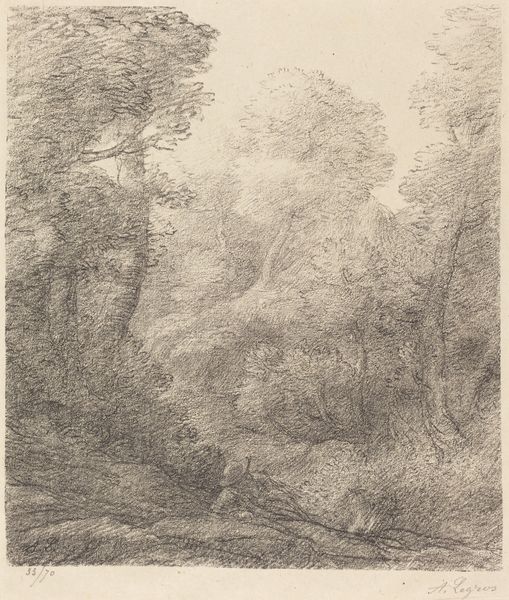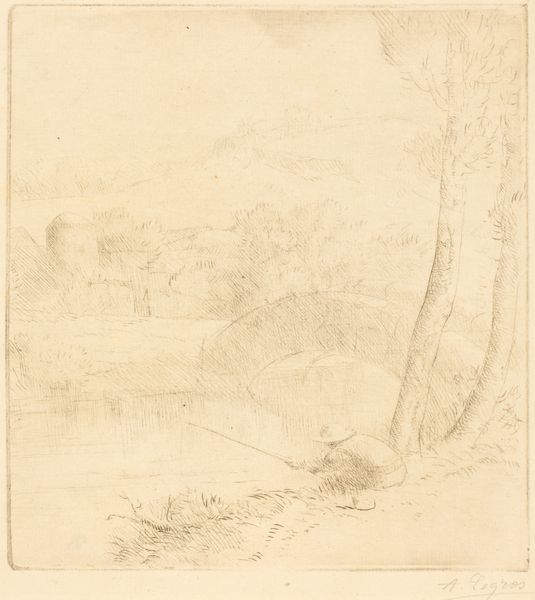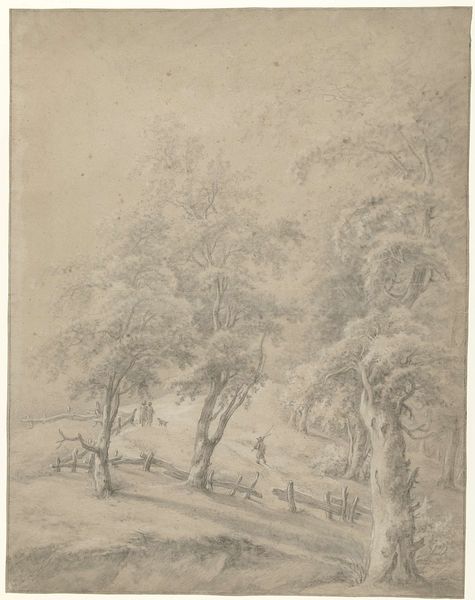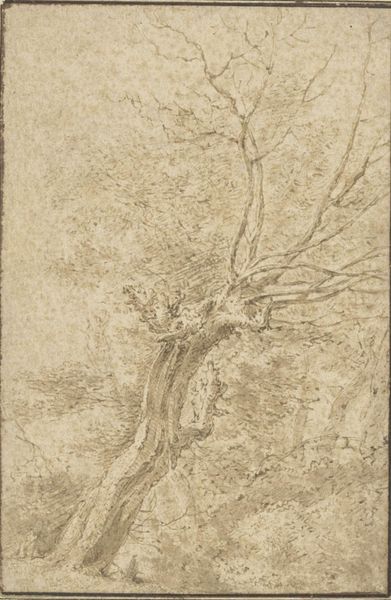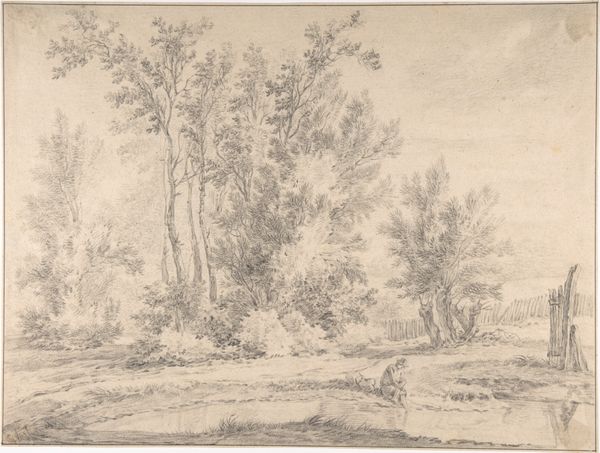
drawing, print, etching, engraving
#
drawing
# print
#
etching
#
pencil sketch
#
landscape
#
pencil work
#
engraving
Dimensions: height 153 mm, width 104 mm
Copyright: Rijks Museum: Open Domain
Editor: This is "Landschap met begroeide heuvel," a landscape by Arnoud Schaepkens, created sometime between 1831 and 1904. It looks like an etching or engraving. I’m struck by how sparse it is, almost dreamlike. What do you see in this piece, and how does it speak to you? Curator: This sparse quality, I think, invites us into a kind of collective visual memory. Consider the enduring symbol of the tree on a hill. What does it evoke? Is it a sacred grove, a place of contemplation? Editor: I hadn’t thought about it that way, but it does feel… charged, somehow. Like it’s more than just a picture of some trees. Curator: Exactly. The simplicity here acts as a vessel, ready to be filled with meaning accumulated over centuries. Think of landscape painting generally, and its connection to ideas of nationhood, or the pastoral ideal. Do you see any hints of that here? Editor: Maybe in the way the landscape seems untamed, even wild? Curator: Precisely! And consider the implications. Wild spaces often represent freedom, escape, even the subconscious mind. But it could also symbolize loneliness or a vulnerability in the face of nature's power. Editor: That’s a lot to pack into a simple etching. Curator: These simple images can be remarkably complex, especially as they echo through time, reminding us of shared visual languages and symbols. Editor: It’s fascinating how much cultural history can be embedded in such a seemingly straightforward image. I’ll never look at landscapes the same way again. Curator: That’s the power of visual symbols – they connect us to something larger than ourselves, to a continuing narrative.
Comments
No comments
Be the first to comment and join the conversation on the ultimate creative platform.
